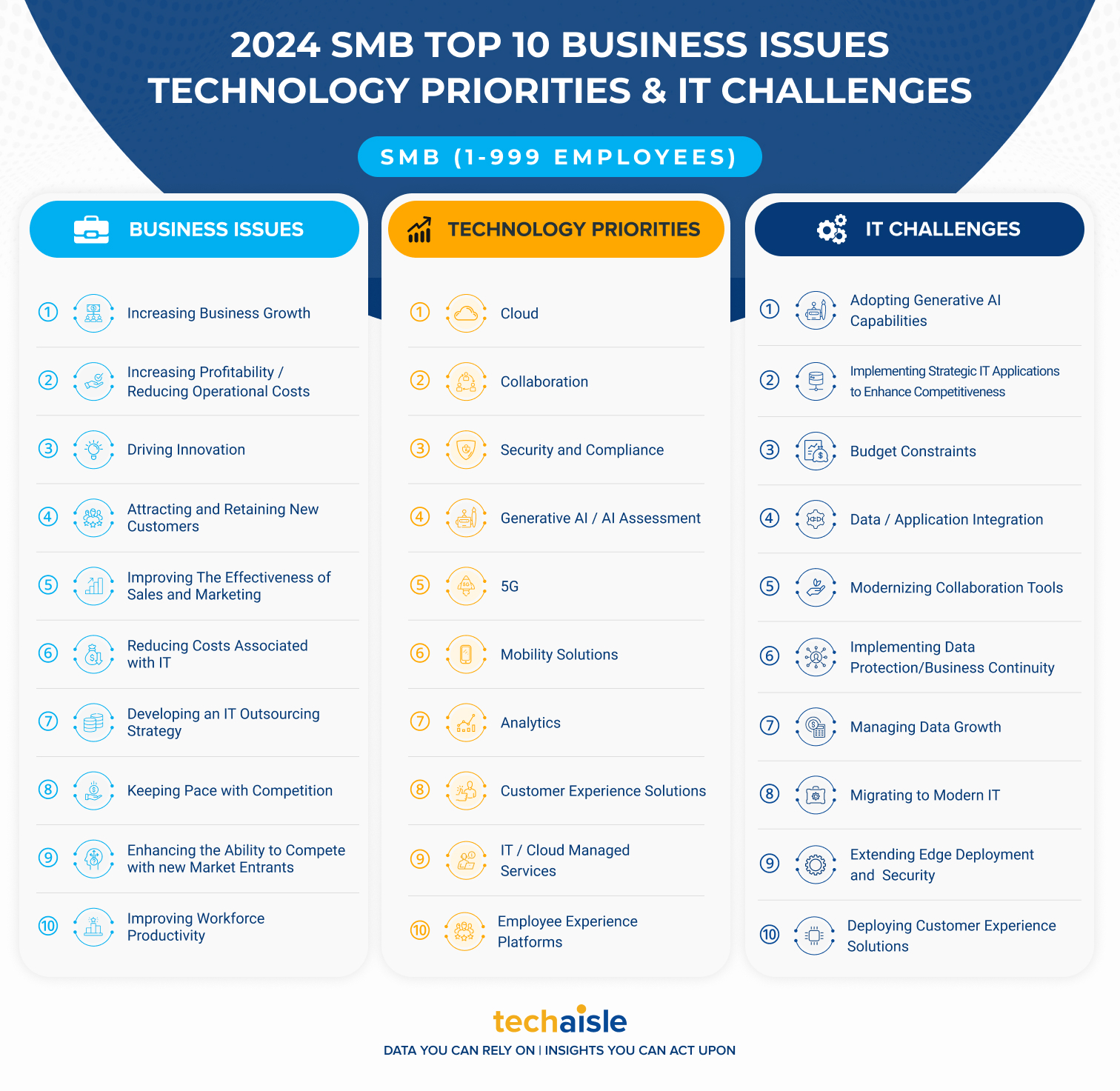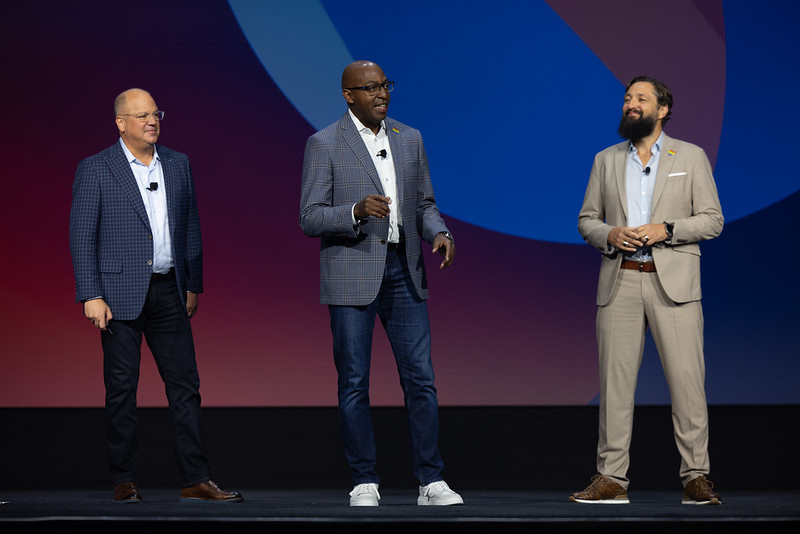Focused on growth and committed to new solutions that expand business horizons – the SMB market is on the brink of a multi-year growth trajectory.
They are here - Techaisle's annual SMB, Core Midmarket and Upper Midmarket Top 10 IT Priorities, IT Challenges, and Business Issues infographics, 13th year of Techaisle tracking at a WW level, and is sought after by IT vendors, channel partners, and media. Techaisle surveyed nearly 5000 SMBs and Midmarket firms, quota sampled to ensure adequate coverage of four small businesses (1-9, 10-19, 20-49, and 50-99 employees), three core midmarket (100-249, 250-499, and 500-999 employees) and two upper midmarket (1000-2499, 2500-4999) segments. As a result, the data represents a robust and reliable sampling of the market segment for IT products and services.
Techaisle surveys thousands of small and midsized businesses (SMBs) to understand technology imperatives and directions. The annual survey establishes context by asking respondents to identify their top business goals, technology priorities, and IT challenges for the upcoming year.
Redefining the art of the possible
The SMB market is a study in contrasts: the tension between boundless aspiration and a constrained reality. However, data shows that a market that has mastered the cloud and is excited by AI will dedicate itself to growth in 2024.














